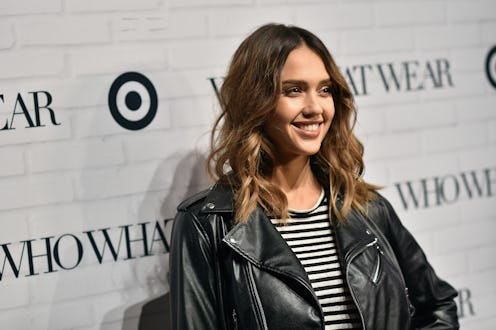Fashion
What All The Different Hair Coloring Terms Mean
With new hair color trends popping up all the time, it can be hard to keep everything straight. From highlights to balayage and everything in-between, all of these terms can seem impossible to figure out. In order to set the record straight, I turned to some of the industry's top hair stylists to help define some of the most popular hair coloring trends. No more mixing up ombre and color melting: Get in the know about your hair color (and ensure you actually get what you want) by brushing up on your salon vocab.
By knowing the difference between all of these techniques, you can actually achieve the hair color you've been craving. Knowing the terminology helps you to communicate more effectively with your stylist. It's a simple way to ensure that both of you are on the same page when it comes to your desired look. Also, your stylist is going to love you for it. Having a client who's on top of their game makes a stylist's job so much easier. So, go ahead: Do yourself (and your stylist) a favor by getting in the know. You won't even need a cosmetology degree to figure out these simple differences. Here are seven popular hair color techniques as defined by some of the industry's top hair colorists.
1. Single Process
According to Maddison Cave, colorist at Rita Hazan salon, single processing is when a stylist uses only one hair color, and no bleach to create a desired look. This is best for those who are looking to cover up gray hairs, slightly lighten their hair, or go darker, she tells me over email.
2. Double Process
This is a technique used by stylists to lighten and tone hair color. Cave explains that during this process a stylist will use bleach to lift the hair's natural pigment, and then use a separate color to tone the hair to the desired shade. For those looking for bold, bright coloring (i.e. platinum blondes), this is how your stylist should do it.
3. Highlights
If you're looking to go a bit brighter, try asking for highlights. According to Redken stylist Fatima Sheikh highlighting is a hair color process that uses foils to brighten certain section of your hair. It's a way to create different hair colors that blend together naturally. Sheikh also explains that the stylist uses foil during this technique as the materials works as a heat conductor to help quicken the coloring process without further damaging the hair.
4. Balayage
Think of balayage as a mixture between highlights and ombre. Celebrity stylist, Nick Arrojo, describes the trend as a hair painting technique that colorists use to create a soft dark to light ombre effect. It's a great way to add subtle brightness to the hair.
5. Color Melting
As Sheikh describes it, "color melting" more describes an end result rather than a technique. Basically, it's when three colors blend into the hair seamlessly. You shouldn't be able to tell when one hair color ends and another begins.
6. Babylights
Arrojo describes babylights as a technique that uses very fine strokes of color around the hair line and top of the head to give your hair a bit more dimension. This is perfect for those who want a touch of brightness added to their look.
7. Ombre
Ombre is a technique used to blend two different hair colors seamlessly. According to Cave, ombre is when hair color gradually fades from root to tip.
Now you can sound like a pro at your next hair appointment by being able to ask for exactly what you want!
